UNDER THE SKIN: HYUNDAI EXCEL SPORTS SEDAN – MY BRILLIANT KOREAN

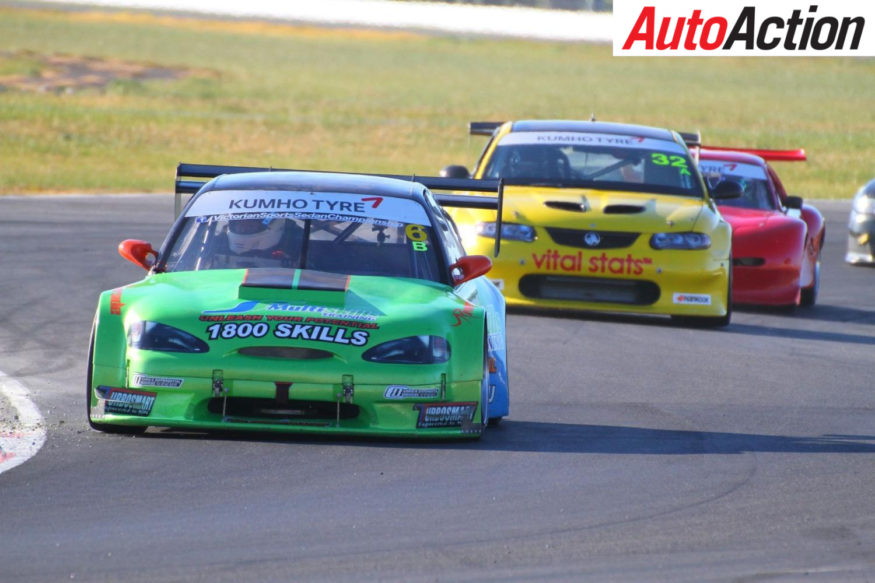
Liam Hill’s Hyundai Excel Sports Sedan
Liam Hill’s Hyundai Excel Sports Sedan started off as a cheap Improved Production car. A lot has changed since…

This Hyundai Excel Sports Sedan started life as a Improved Production Car
A HYUNDAI Excel? Not the first car that comes to mind when you mention Sports Sedans.
But one Excel fast becoming a contender in the Victorian Sports Sedan Championship and has recently surprised some higher horsepower cars at rounds of this year’s National Sports Sedan Series. Car owner, builder and driver Liam Hill continues to tinker with it and hopes for a big season next year for the Riverside Racing Excel.
But how does a compact Korean sedan turn into a fire-breathing Sports Sedan?
It was supposed to be so different; it was supposed to be a $10,000 Improved Production Datsun. The ugly duckling has turned into a quite sophisticated and well-laid out piece of machinery, which has this year taken victory at Phillip Island and pushed some the lead contenders at the second round of the National Sports Sedan title at Winton.
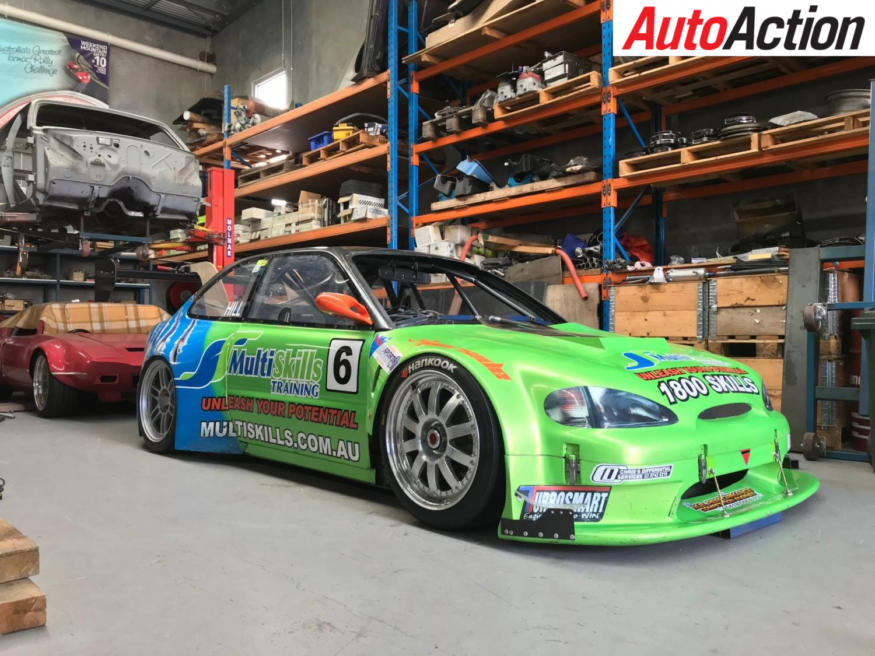
“Originally the car was a Datsun 1600,” Hill explains, “so it was something we picked up and really were going to build into a cheap race car, a ‘you think you can build a race car for under $10,000’ type of thing. It originally had a little L Series Datsun engine in it, with Webers and that sort of stuff.
“But as things progressed and we couldn’t help tinkering with it. It ended up with half a spaceframe, then the SR20 [engine], and we actually damaged the bodyshell welding the sunroof shut. It looked alright to start off but when we walked away it turned to jelly. We actually spent some time fixing it up and trying to get it right, then we started looking at BMWs, and we wondered what type of BMW bodyshell will fit on the car. An E30 was actually pretty close to fitting on the chassis, but the wreckers wanted a ton of money for the shell.
“Next door, there was another wrecker and we started measuring around, and there was a Hyundai Excel sitting there. Every dimension was within a few millimetres of the Datsun and the old man had a bit of a chuckle and said, ‘do we do this?'”
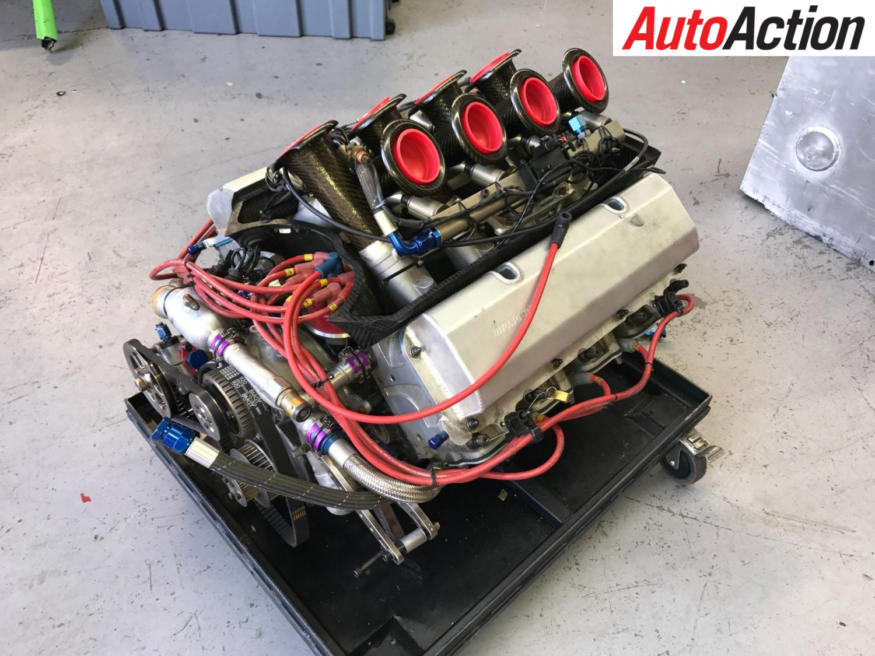
The Hyundai has been developed in three different configurations; naturally aspirated, supercharged and V8. Hill debuted the car after a number of years build time at Island Magic in 2013 and was surprised that it was competitive straight out of the box.
“To be honest with engine positions and steering we didn’t even know if it was going to drive in a straight line,” laughed Hill.
“The steering ratio on it is 30 percent quicker than a Supercar; little things like that meant it wasn’t going to be too aggressive and the first day we went out we did 30 laps and it was a rocket straight out of the box, we couldn’t believe it.”
It was reward for Hill as the car had been – apart from the driveline – hand-fabricated, hence the long road to a debut.
Although the car has been developed effectively three times due to the change of the powerplant, the car still keeps the same suspension, gearbox and diff that it carried at that faithful meeting in 2013. Minor tweaks were made to the chassis once the team decided to supercharge the SR20 engine.
“When we added the supercharger we stiffened up the rear end because it used to have a bit of flex in the rear end, so we cut a fair chunk of bars out and stiffened up the shock points,” Hill continued.
“Besides that, the front of the car from naturally aspirated to supercharged was identical, an intercooler needed to be fitted and squeeze the supercharger and so forth in.”
And what brought on the supercharger?
“We damaged an engine at Island Magic in 2014, so we did a year and a bit with the naturally aspirated engine. It was down on compression, so we pulled the engine out after Island Magic, looked at it and thought ‘what can we do here?’ We started pricing up what it was going to be cost-wise to go to the next step, with an Under 2-Litre engine. To keep it as an Under 2-Litre car we could spend half as much and put the supercharger on and be a shitload quicker. It seemed like a logical step.”

Hill has recently changed engines again, after a similar story at the combined Victorian State and National Sports Sedan where his car took up to the much more powerful Monaros and Camaros in the back half of the circuit. Engine issues curtailed the mighty Excel’s running so the goal was to find a reliable, yet powerful motor.
“The new engine is an ex-Prodrive V8 Supercar engine completely to their specs. We haven’t modified [it], and [it] will run the same ECU, the whole lot. Engine-wise it will be identical to a Supercar.”
A Holinger gearbox transfers power to a new independent nine-inch diff made by Race Products, which features more V8 Supercar technology in the form of the diff centre. But more money may equal a Holinger LSD to get rid of the spool.
The new engine has seen a significant advance on the weight balance of the car, but it has also had an effect on the comfort of the driver.
“Everything else has pretty much improved based on where the car was; we’re able to move the motor 170mm further back from where it used to be, the weight balance of the car across all four corners is a lot closer to your perfect set-up. All the weights are 50-50 on the dot. All these small things have improved in the car, the down side is that it will be a lot hotter in the car.”
Through the developments the car had been through, it had changed slightly with extra bars and bracing for the supercharger intercooler and engine being install to suit the SR20. Once all that had been removed, Hill and the team at Riverside Racing thought the hot new Prodrive Ford V8 would drop straight in. It proved more difficult than hoped.
“When we were originally building the car, we put a V8 in and it all fitted pretty easy, but a lot of bars went in towards the end of the build,” Hill explained. “Then we got the new motor and we thought this would bolt straight in, it just about dropped straight into the hole and we weren’t able to drop it into the bottom of the chassis because it hit everything.
“Basically, we had to cut the middle of the car out.”
“All the bar work around the centre tunnel across the front firewall and all that kind of stuff was cut out and now has been manufactured to fit around the engine. We’ve used a full Supercar airbox, we had to just make a little modification to the angle of it, but we were able to build the car around and use the full Supercars airbox, which was quite a feat in a sports sedan because a lot are quite confined.”

Trying to remove some of the heat, Hill has modified the exhaust to manoeuvre the exhaust underneath the sump, which was another difficulty, where it will merge and join up with the mufflers.
Hill has been surprised by the instant effects of the engine swap, which show the car will hold a significant weight advantage compared to some of the much bigger and powerful sports sedans.
“We used to run a lot of Nissan road car parts in it like the bell housing, which was a 6kg saving on its own. Then there is no supercharger on the side of it, that’s 8kg and another 8kg for the intercooler and the piping. Even though it is a V8 with a cast iron block all of the accessories we don’t need for the new motor has lightened the car up.”
This leads to a weight, which with driver should be very close to the class minimum 1050Kg. Of course, the body is where most of the saving can be physically seen, but the car will undergo a further trim when the current bodywork is updated and revised to incorporate a number of the new regulations.
“All going well, when we get the car running we are going to re-do the bodywork on it,” enthused Hill.
“It’s a little bit on the ancient side, we did it when it was an Under 2-Litre car, we have done little tweaks here or there, but it hasn’t progressed much since then. Once we get this all done because we have all the new wheels, new uprights, new suspension and everything to go on it, we’ll lower the car down 20mm from where it was previous just to get it down to the minimum ride height. Once we re-do all the suspension, we’ll have to replace the guards and we’ll do a whole new bodykit that is a lot more complimenting of all of that.”
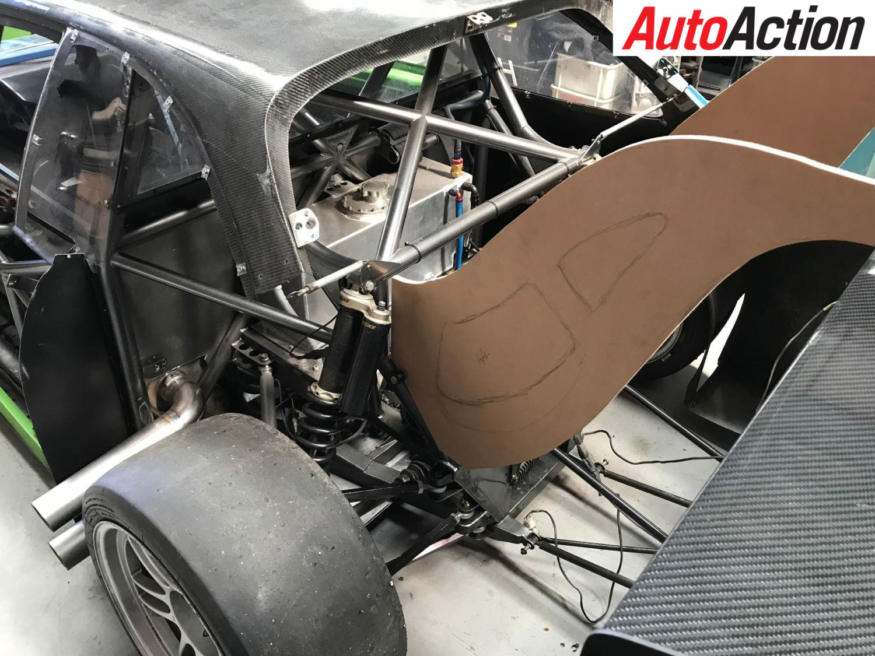
The Excel continues the ingenuity that sport sedans are renowned for by adapting a rear wing off an Argon Le Mans Car into its aero design, however this will be replaced after working with Scott Beaton’s Aero Design. The Excel, as well as teammate Shane Woodman’s BMW, have been the test beds for new aero developments. Hill is confident he can definitely improve in this area.
“Shane [Woodman] did a bit of work to the BMW with Aero Design. That was just a rapid learning curve just learning from there and I think our plans for the future are to get Aero Design on board and we’ll get them to design something for the Hyundai.”
But that doesn’t mean that the Excel won’t resemble the shape of a Korean buzz box anymore, it will be quite the opposite.
“We want to keep exactly like an Excel, we’ll just try and refine the aero. A lot of the gains to be made are underneath so we won’t lose the look of the car,” reassured Hill.
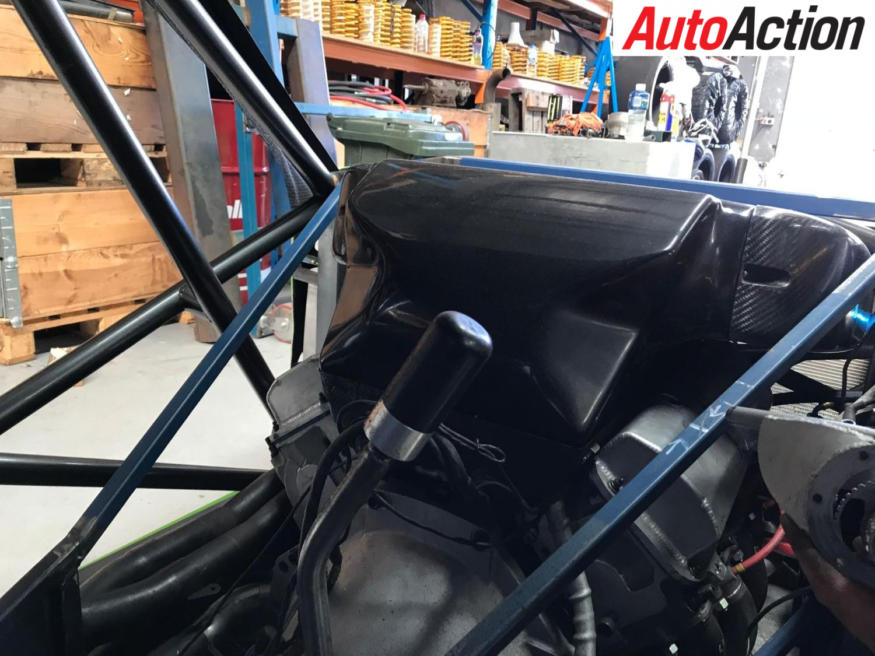
The chassis is of full tube construction and has the suspension components attached, unlike most other sports sedans. This has many advantages including the ability to remove the engine and driveline, but still be able to roll the car as if the missing components were in it. The new engine has resulted in a number of modifications to the chassis.
“The changes due to the new engine include cutting most of the front end out, so we are retaining the lower pick up points from the front suspension, but the upper ones will be modified,” described Hill.
“All through the car, the old bracing has been removed and we have built it around the engine with a new set up. There were quite a few changes at the front, but the rear will be unchanged apart from the new uprights, which will be adapted to the existing pick up points.”
The car features brand new custom built three-piece, forged-centre 18×12 wheels, which house the brand new 395mm AP Racing rotors and six-piston brake calipers at the front and 360mm rotors and four-piston rotors on the rear.
That begs the question, how does it handle?
“It moves around a little bit, but it’s a nice car and quite rewarding,” Hill said excitedly. “When it is all going right it is a rewarding car to drive and it’s something you don’t want to get out of, you see a lot of cars and it looks like you’re constantly wrestling, but when the things happy it’s actually a pleasure to drive.”
The handling characteristics can be relayed back to the ex-V8 Supercar four-way adjustable Penske Shocks and a box of 50 springs that have all been tried and tested.
While the electronics are all MoTec, from the M800 ECU to the ADL dashboard. Sensors are featured throughout the car covering all the moving components and providing data including suspension position and g-force figures. This has been a major help after Hill struggled with set-up late last year, but has since learnt to use the data to help with his decision making.
“You can get lost if you purely come from driver feedback versus what is happening to the car, you can go in the complete wrong direction,” implored Hill. “With the data, say I feel there is a problem with the car or I can make an improvement we can look at the data and use it as a reference for what I’m talking about.
“Sometimes with driver feedback you have to go in the complete opposite direction.”
“We lost our way 12 months ago and we ended up in No Man’s Land. It got to the point where I got a guy down from Queensland, who’s an engineer, James McKay. He came down to Island Magic with us and we used him on the weekend, and he basically got us back on the right path and back in its operating window. Since then, it has been just minor tweaks within the window, but once we were back in the realms of reality it’s actually been really good.”
There aren’t any expectations, we just want a more reliable package compared to what we had. The missing pace in the car was more to do with suspension, the smaller tyres and so forth, whereas the engine I’m hoping to be a more reliable aspect of the car.
By HEATH McALPINE
Article originally published in Issue 1724 of Auto Action.
For our latest Under The Skin feature pick up the current issue of Auto Action Magazine, on sale now. In the meantime follow us on social media Facebook, Twitter, Instagram or sign up for our weekly email newsletter for all the latest updates.


